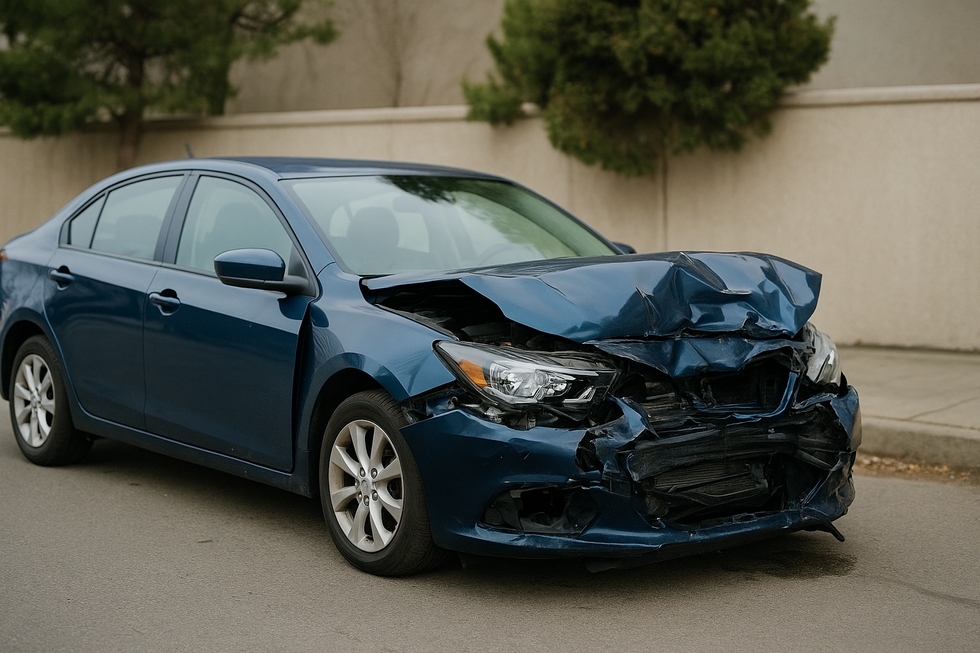
Rear-end collisions are among the most common types of car accidents, not only in Idaho but across the United States. They can result in significant injuries and property damage, even at relatively low speeds. Understanding who is at fault in these accidents under Idaho law is critical for drivers involved in such collisions. This blog post breaks down the factors that determine liability in rear-end accidents specifically in Idaho and provides guidance on what to expect in terms of insurance claims and legal outcomes.
Idaho’s Basic Fault Rules
Idaho is classified as a “fault” state for car accidents, meaning that the driver responsible for causing the collision is also responsible for the resulting damages. This is typically handled through that driver’s automobile insurance policy. In most rear-end collisions, fault is often straightforwardly assigned to the driver who hits the vehicle in front of them, but there are situations where liability can be shared or even reversed entirely.
Common Assumptions About Rear-End Collision Fault
Generally speaking, Idaho law presumes that the driver who rear-ends another vehicle is at fault. The rationale behind this presumption is that drivers must maintain a safe following distance, allowing ample time to react if the car ahead stops suddenly or slows down unexpectedly. In other words, Idaho law places a clear duty of care on drivers to be vigilant and cautious, always keeping a safe distance based on road conditions, speed, and traffic flow.
However, this presumption isn’t absolute. Situations can occur where the front vehicle’s driver contributes significantly to the collision. Let’s explore some scenarios where fault might be more complicated than it initially appears.
Scenarios Where Fault Might Be Shared or Reversed
Scenario 1: Abrupt and Unsafe Stops
In some cases, the driver of the front vehicle may share fault if they make an abrupt or unsafe stop, especially without proper signaling. For example, if a driver suddenly stops in the middle of a high-speed road without any reasonable cause or fails to signal a turn properly, an Idaho court or insurance adjuster may determine that both drivers share some responsibility.
Scenario 2: Faulty Vehicle Equipment
Another scenario involves malfunctioning brake lights or signals. Idaho drivers are required by state law to ensure their vehicles are properly maintained, including functioning lights. If a vehicle’s brake lights fail, making it impossible for the following driver to anticipate a stop, the fault could shift or at least be shared between both parties.
Scenario 3: Chain-Reaction Collisions
Chain-reaction crashes—common during heavy snowfalls or slippery conditions frequently experienced in Idaho winters—also complicate fault determination. In these cases, the initial driver who sets off the collision is often found responsible. However, subsequent drivers could also bear partial fault if found to have been following too closely or driving too quickly for conditions.
Idaho’s Comparative Negligence Law
Idaho follows the rule of “modified comparative negligence” to determine compensation in accident cases. Under this rule, an injured party can still recover compensation for damages as long as they are less than 50% responsible for the accident. However, any compensation received is reduced proportionately by their percentage of fault.
For example, if you’re involved in a rear-end collision and an Idaho court determines you’re 20% at fault due to partially inattentive driving, your awarded damages would be reduced by 20%. If you’re deemed to be 50% or more at fault, however, Idaho law bars you from recovering any damages.
Gathering Evidence to Determine Fault
Because Idaho law allows for shared liability, documenting the accident thoroughly is crucial. After a rear-end collision in Idaho, taking the following steps will strengthen your ability to clarify and establish fault accurately:
- Police Report: Always contact local law enforcement to file an official accident report. Police reports often include the responding officer’s initial assessment of fault based on statements and physical evidence at the scene.
- Photos and Videos: Document vehicle damage, road conditions, weather, and any other relevant factors. Clear visuals can provide objective evidence about the circumstances of the accident.
- Witness Statements: If anyone witnessed the collision, obtaining their statements and contact information can support your version of events.
- Medical Records: Seeking immediate medical attention provides documentation linking injuries directly to the collision, which can later support a personal injury claim if necessary.
Time Limits for Filing Claims in Idaho
Understanding Idaho’s statute of limitations is critical. In Idaho, victims of car accidents generally have two years from the date of the accident to file a personal injury lawsuit (Idaho Code § 5-219). For property damage, you typically have three years. Missing these deadlines could prevent you from pursuing compensation altogether, regardless of how clear-cut your fault claim might be.
Navigating Insurance Claims
Once fault has been assessed, Idaho’s at-fault system means the responsible driver’s insurance is primarily accountable for damages. Victims may claim compensation for:
- Medical expenses (immediate and future care)
- Vehicle repair or replacement costs
- Lost wages and income due to missed work
- Pain and suffering
- Emotional distress and reduced quality of life
If there’s a dispute over fault—especially in complicated scenarios like chain reactions or when multiple drivers are involved—the claims process can become lengthy and complex.
Conclusion: Fault Determination Isn’t Always Simple
Though Idaho law initially assumes the driver in the rear is at fault, practical application is rarely that straightforward. Complex factors and Idaho’s comparative negligence laws can significantly affect outcomes. Knowing how fault is typically assigned, what evidence to gather, and how the legal process unfolds in Idaho is essential for any driver involved in a rear-end collision.
Being informed is your best strategy for protecting your interests and ensuring fair treatment under Idaho law following a rear-end accident. Contact us today for a free consultation to see how we can help you recover from your accident.

